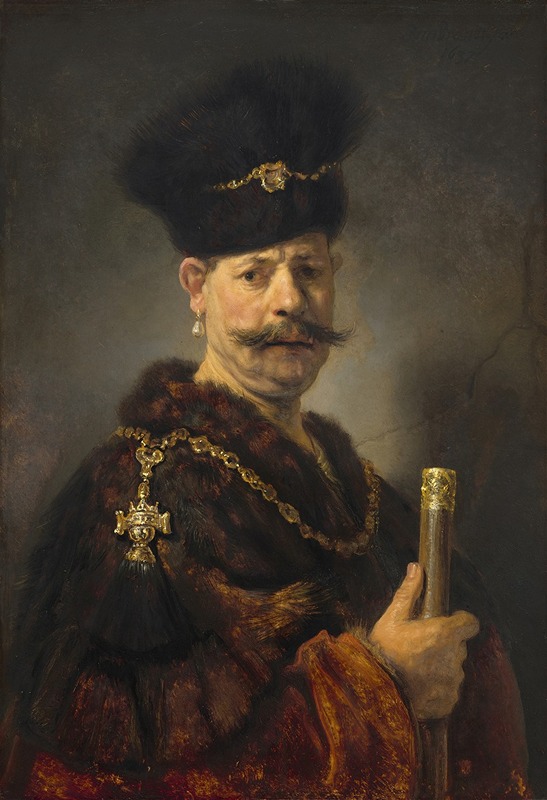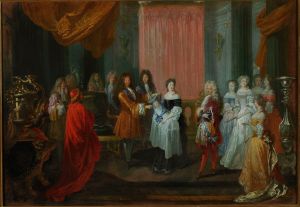
A Polish Nobleman
A hand-painted replica of Rembrandt van Rijn’s masterpiece A Polish Nobleman, meticulously crafted by professional artists to capture the true essence of the original. Each piece is created with museum-quality canvas and rare mineral pigments, carefully painted by experienced artists with delicate brushstrokes and rich, layered colors to perfectly recreate the texture of the original artwork. Unlike machine-printed reproductions, this hand-painted version brings the painting to life, infused with the artist’s emotions and skill in every stroke. Whether for personal collection or home decoration, it instantly elevates the artistic atmosphere of any space.
"A Polish Nobleman" is a painting by the renowned Dutch artist Rembrandt van Rijn, created in 1637. This work is an oil on canvas and measures approximately 115.5 cm by 68.8 cm (45.5 inches by 27.1 inches). It is currently housed in the National Gallery of Art in Washington, D.C.
The painting depicts a man dressed in what appears to be traditional Polish noble attire, which includes a fur-trimmed robe and a distinctive hat. The subject's identity remains unknown, and there has been much speculation over the years regarding who he might be. Some art historians have suggested that the man could be a member of the Polish nobility, while others believe he might be a model dressed in Polish costume, a common practice in portraiture of that era.
Rembrandt's skillful use of light and shadow, known as chiaroscuro, is evident in this painting. The light falls on the nobleman's face and upper body, highlighting his features and the rich textures of his clothing, while the background remains dark and unobtrusive. This technique not only adds a dramatic effect but also draws the viewer's attention to the subject's face and expression.
The painting is notable for its detailed rendering of the fabrics and textures, showcasing Rembrandt's mastery in depicting different materials. The fur trim of the robe, the intricate patterns of the fabric, and the soft feathers of the hat are all rendered with meticulous attention to detail. This level of detail helps to convey the wealth and status of the subject, even though his exact identity remains a mystery.
"A Polish Nobleman" is a fine example of Rembrandt's portrait work during the 1630s, a period when he was at the height of his artistic powers. During this time, Rembrandt was known for his ability to capture the personality and character of his subjects, often imbuing them with a sense of dignity and presence. This painting is no exception, as the nobleman appears both regal and contemplative.
The painting has been part of various collections over the centuries and has been the subject of numerous studies and exhibitions. Its presence in the National Gallery of Art allows a wide audience to appreciate Rembrandt's artistry and the cultural exchange between the Dutch and Polish during the 17th century.
In conclusion, "A Polish Nobleman" by Rembrandt van Rijn is a masterful portrait that exemplifies the artist's skill in capturing the essence of his subjects through the use of light, shadow, and meticulous detail. Despite the mystery surrounding the identity of the nobleman, the painting remains a significant work in Rembrandt's oeuvre and a testament to his enduring legacy in the world of art.


















